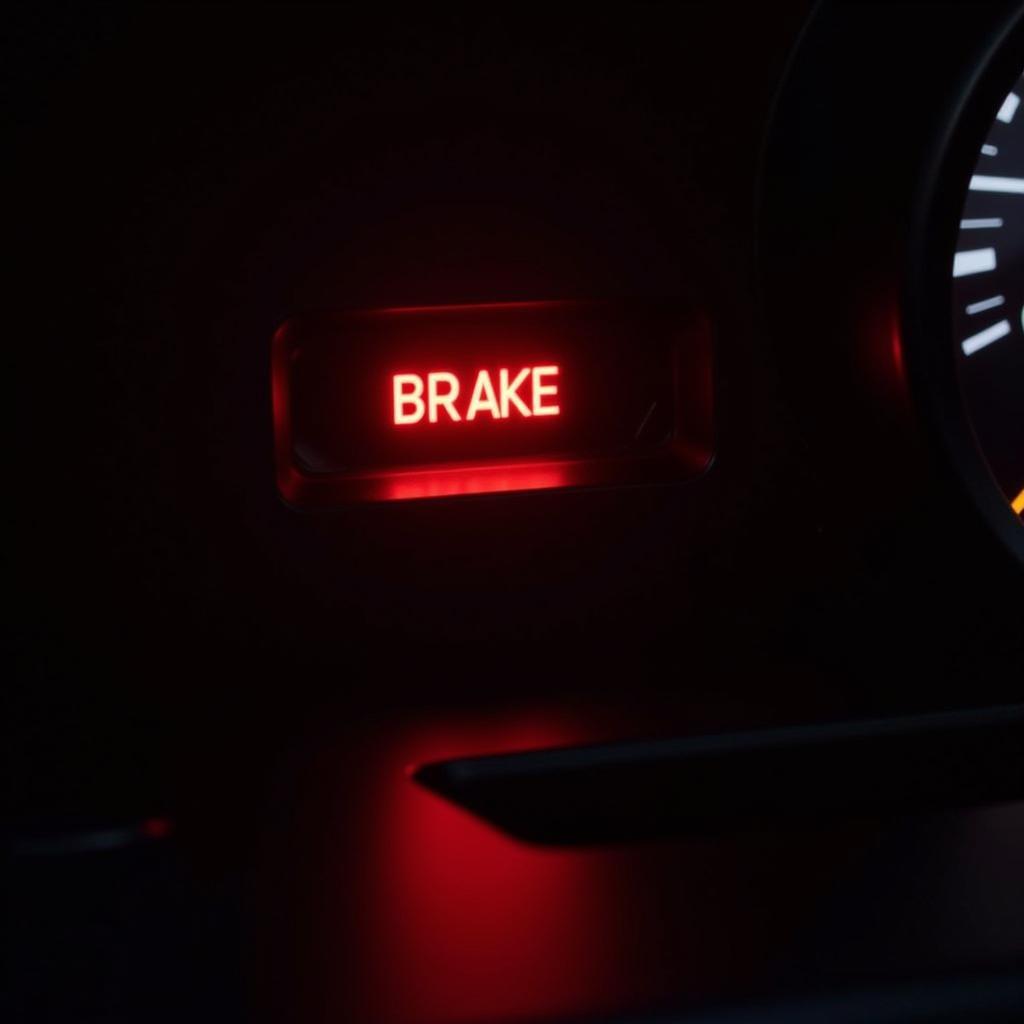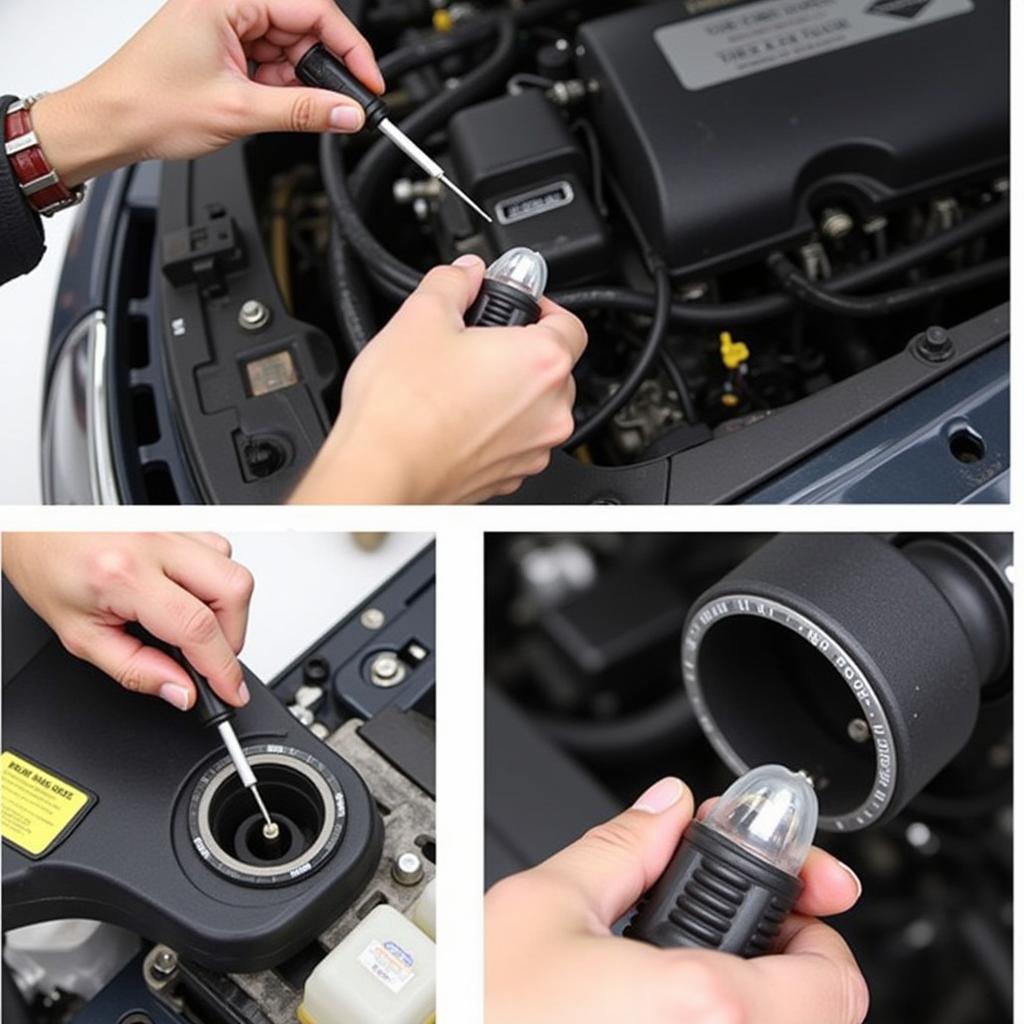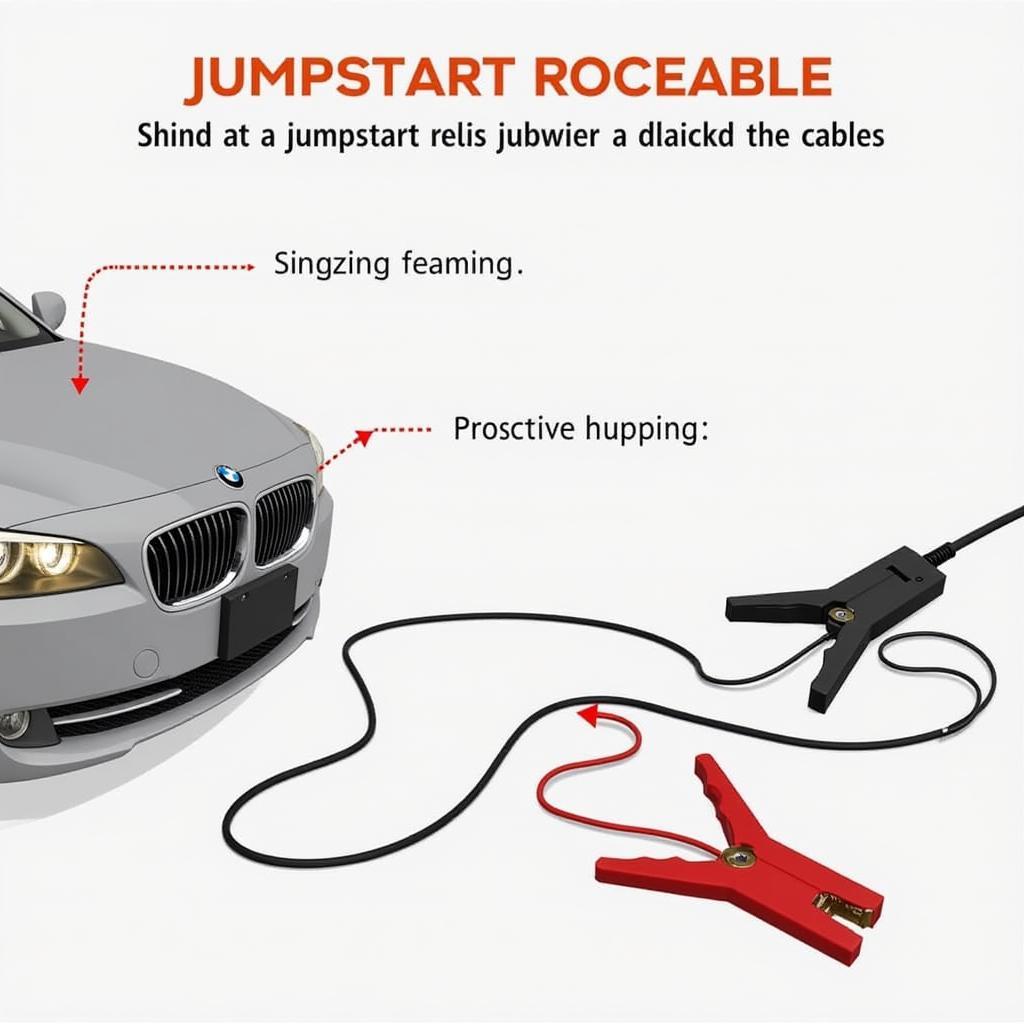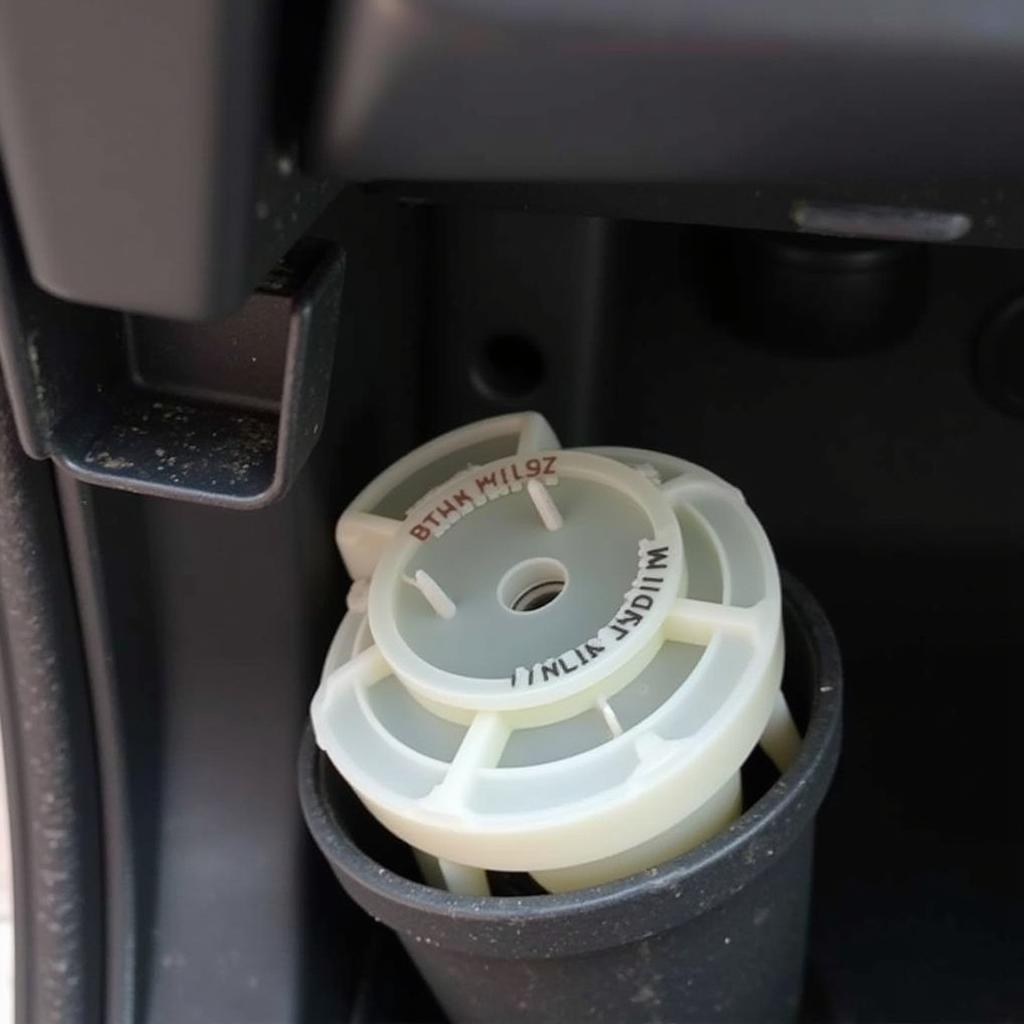Experiencing the double whammy of a brake malfunction warning light glaring at you, and your car refusing to start can be a recipe for instant panic. However, before you reach for the tow truck number, it’s important to understand that these two issues, while seemingly unrelated, might be connected and could stem from a common culprit. This article delves into the potential reasons behind your car’s refusal to start when a brake malfunction warning light is on, and provides a step-by-step guide to help you troubleshoot the problem.
 Brake Warning Light on Car Dashboard
Brake Warning Light on Car Dashboard
Common Causes and Troubleshooting Steps
Several issues can trigger the brake malfunction warning light and simultaneously prevent your car from starting. Let’s explore the most common culprits:
1. Low Brake Fluid Level
The Culprit: Brake fluid is the lifeblood of your car’s braking system. When the fluid level drops too low, usually due to a leak or worn-out brake pads, it can trigger the warning light and affect brake performance. Some vehicles might also prevent the engine from starting as a safety precaution.
Troubleshooting:
- Check the brake fluid level: Locate the brake fluid reservoir under the hood (refer to your owner’s manual for the exact location).
- Inspect the fluid level: If it’s below the “minimum” mark, carefully top it off with the correct brake fluid type for your car.
- Look for leaks: Inspect the area around the reservoir and along the brake lines for any signs of fluid leakage.
Expert Insight: “A drop in brake fluid level is one of the most common reasons for the brake warning light to illuminate. Regular checks of your brake fluid are crucial for maintaining a safe and efficient braking system,” says John Miller, Senior Automotive Engineer at CarFix Solutions.
 Mechanic Checking Brake Fluid in a Car
Mechanic Checking Brake Fluid in a Car
2. Faulty Brake Light Switch
The Culprit: The brake light switch is a small but vital component that signals your brake lights to illuminate when you press the brake pedal. A malfunctioning switch can cause various issues, including preventing the engine from cranking.
Troubleshooting:
- Locate the brake light switch: It’s usually located above the brake pedal, under the dashboard.
- Test the switch: With the ignition off, press and release the brake pedal while feeling for a click in the switch. If there’s no click or resistance, the switch might be faulty.
- Replace if necessary: Replacing a brake light switch is a relatively simple task that can be done at home with basic tools or by a mechanic.
3. Dead or Weak Battery
The Culprit: While a dead battery might seem unrelated to the brake warning light, a weak battery can cause multiple electrical systems to act erratically, including triggering warning lights.
Troubleshooting:
- Jumpstart your car: Connect your car’s battery to another vehicle’s battery using jumper cables.
- Test the battery: If the car starts after a jumpstart, have your battery tested by a mechanic to determine its health.
- Replace if necessary: A weak or failing battery needs to be replaced to avoid further starting issues.
Expert Insight: “A battery on its last legs can lead to unpredictable electrical behavior in your car, including false warning lights. If you’re experiencing frequent starting issues, it’s crucial to address the battery issue promptly,” recommends Sarah Jenkins, Lead Mechanic at AutoCare Center.
 Jumpstarting a Car with Jumper Cables
Jumpstarting a Car with Jumper Cables
4. Electrical Fault
The Culprit: A malfunction in the car’s electrical system, such as a blown fuse, a short circuit, or a problem with the ECU (Engine Control Unit), can disrupt communication between the braking system and the engine, leading to starting issues and triggering the brake warning light.
Troubleshooting:
- Check the fuses: Locate the fuse box (refer to your owner’s manual) and inspect the fuses related to the brake system and engine control.
- Inspect for loose connections: Examine the battery terminals and wiring harnesses for any loose or corroded connections.
Expert Insight: “Electrical gremlins can be particularly tricky to diagnose and often require specialized equipment. If you suspect an electrical fault, it’s best to consult a qualified auto electrician for a thorough diagnosis,” advises Mark Thompson, Certified Auto Electrician at Thompson’s Auto Electric.
When to Seek Professional Help
While some issues can be resolved with basic troubleshooting, it’s important to know when to seek professional help. If:
- You’ve tried the troubleshooting steps and the issue persists.
- You’re uncomfortable working on your car.
- You suspect a complex electrical fault.
In these situations, it’s best to visit a trusted mechanic or dealership for expert diagnosis and repair.
Conclusion
Experiencing a brake malfunction warning light and a car that won’t start can be a frustrating situation. However, understanding the potential causes and armed with basic troubleshooting knowledge, you can often pinpoint the issue and take appropriate action. Remember, regular car maintenance, including brake inspections and fluid checks, can help prevent many of these issues from occurring in the first place, ensuring your safety and a smoother driving experience. For guidance on turning off the brake warning light, refer to our detailed article: turn off brake warning light.


